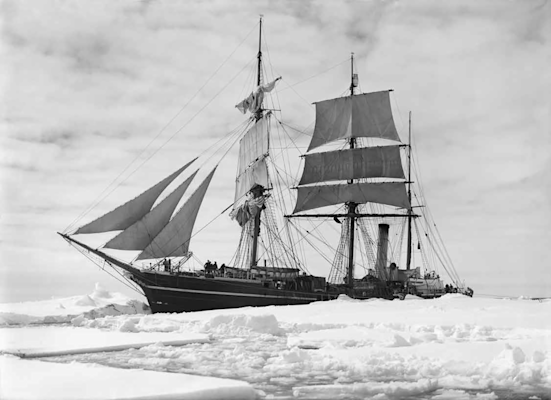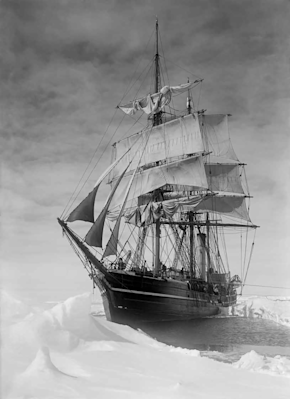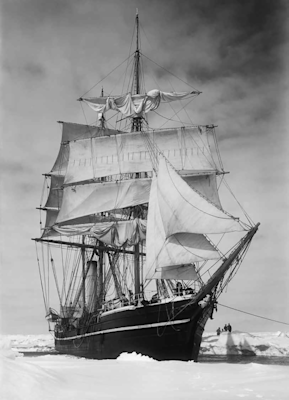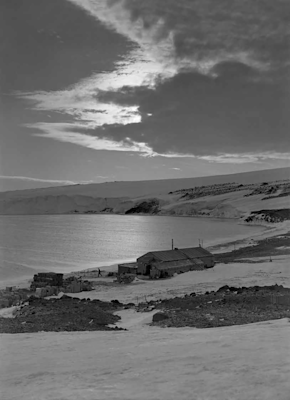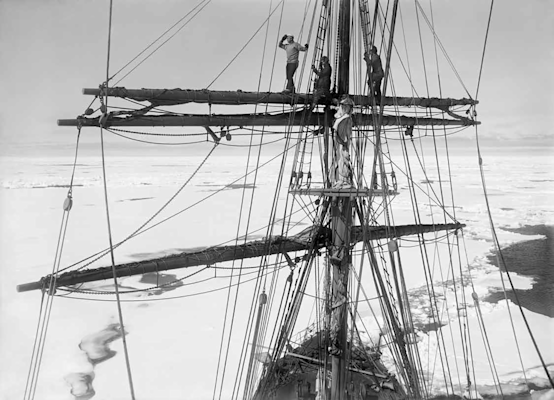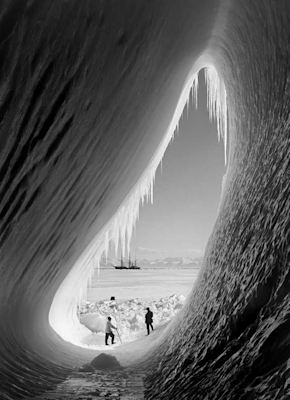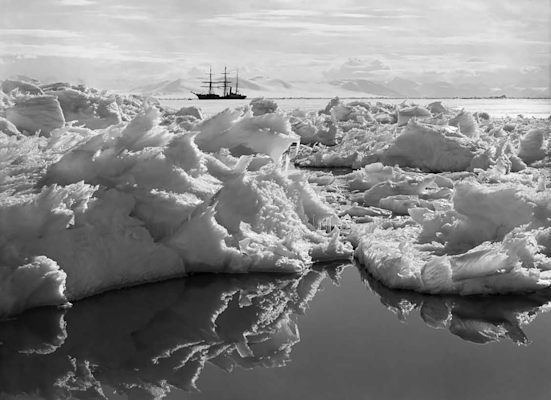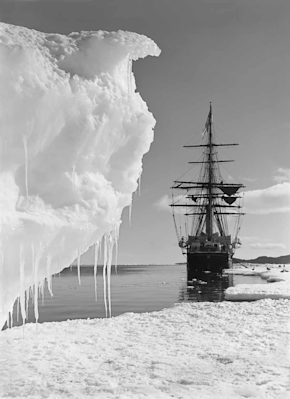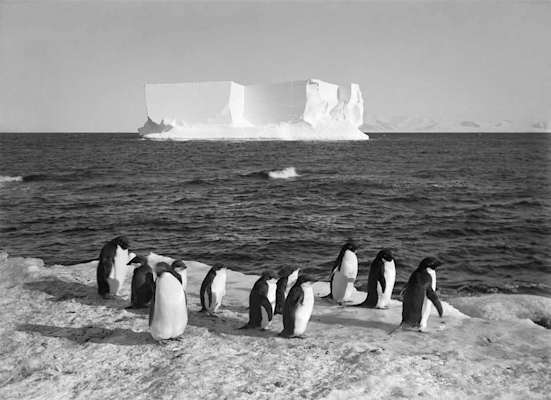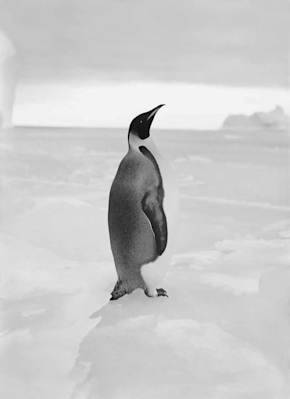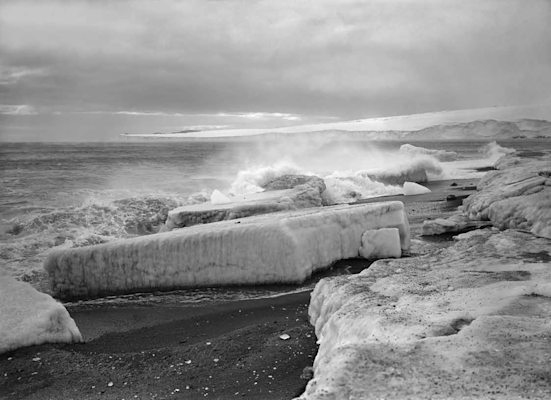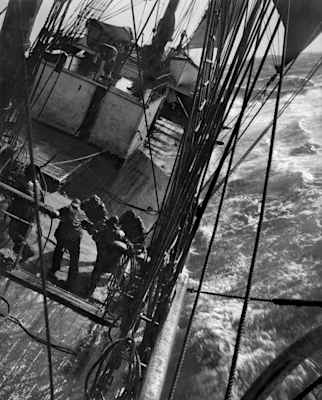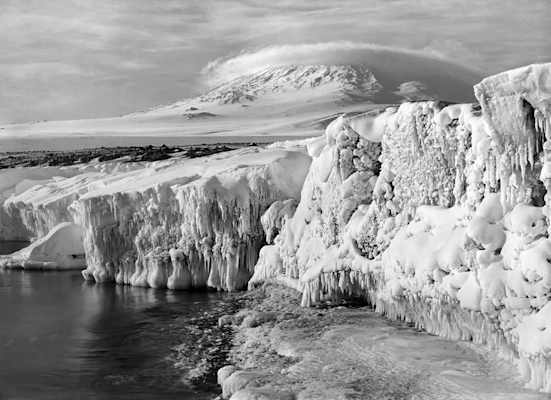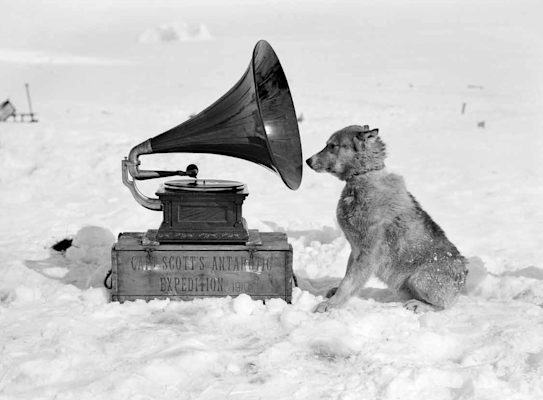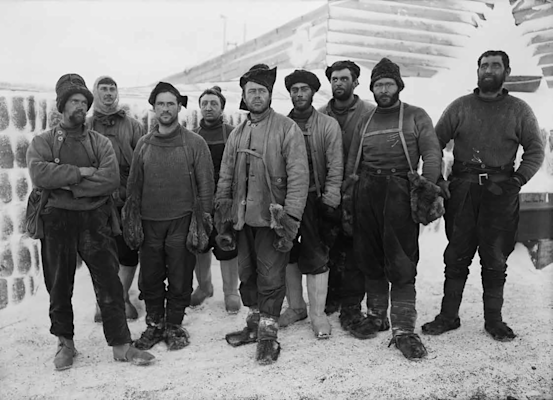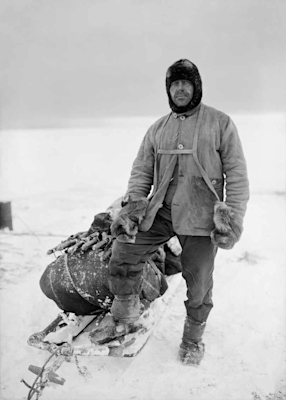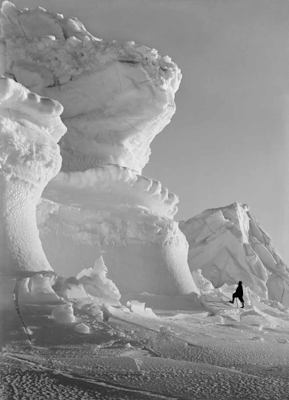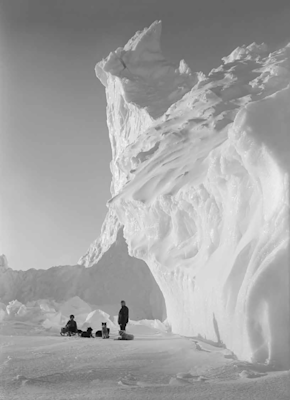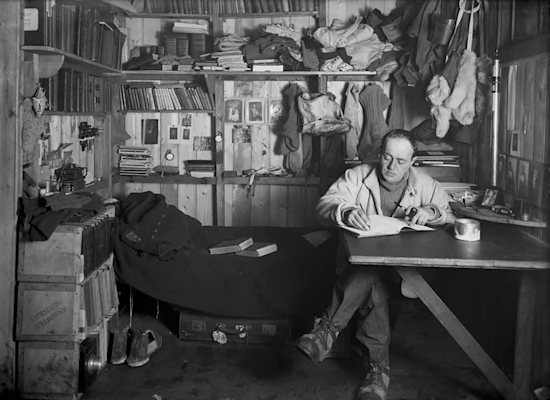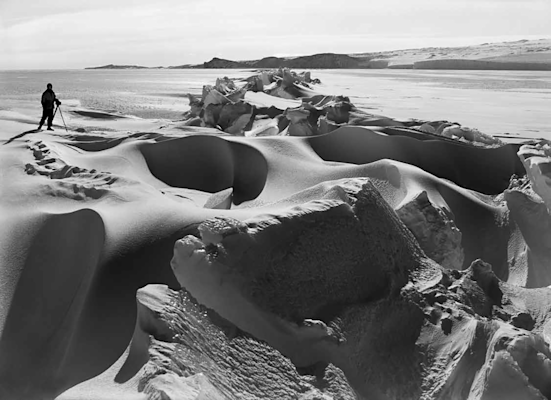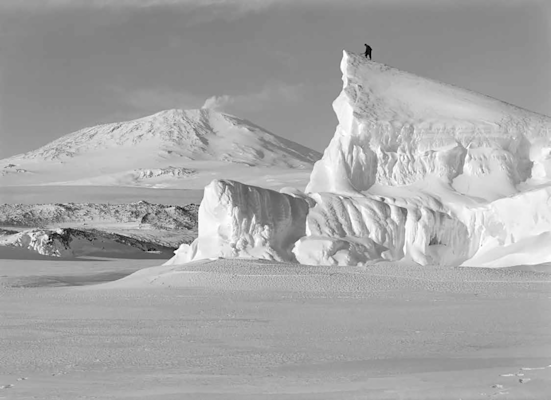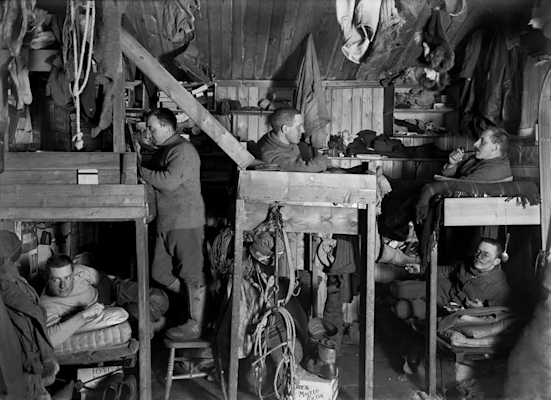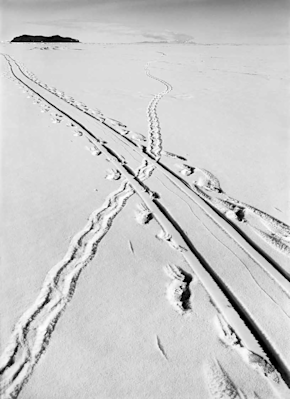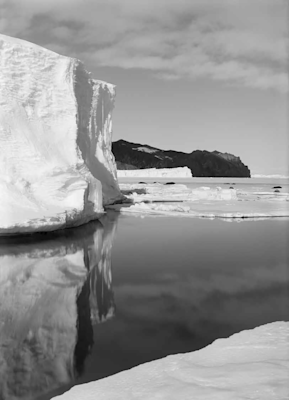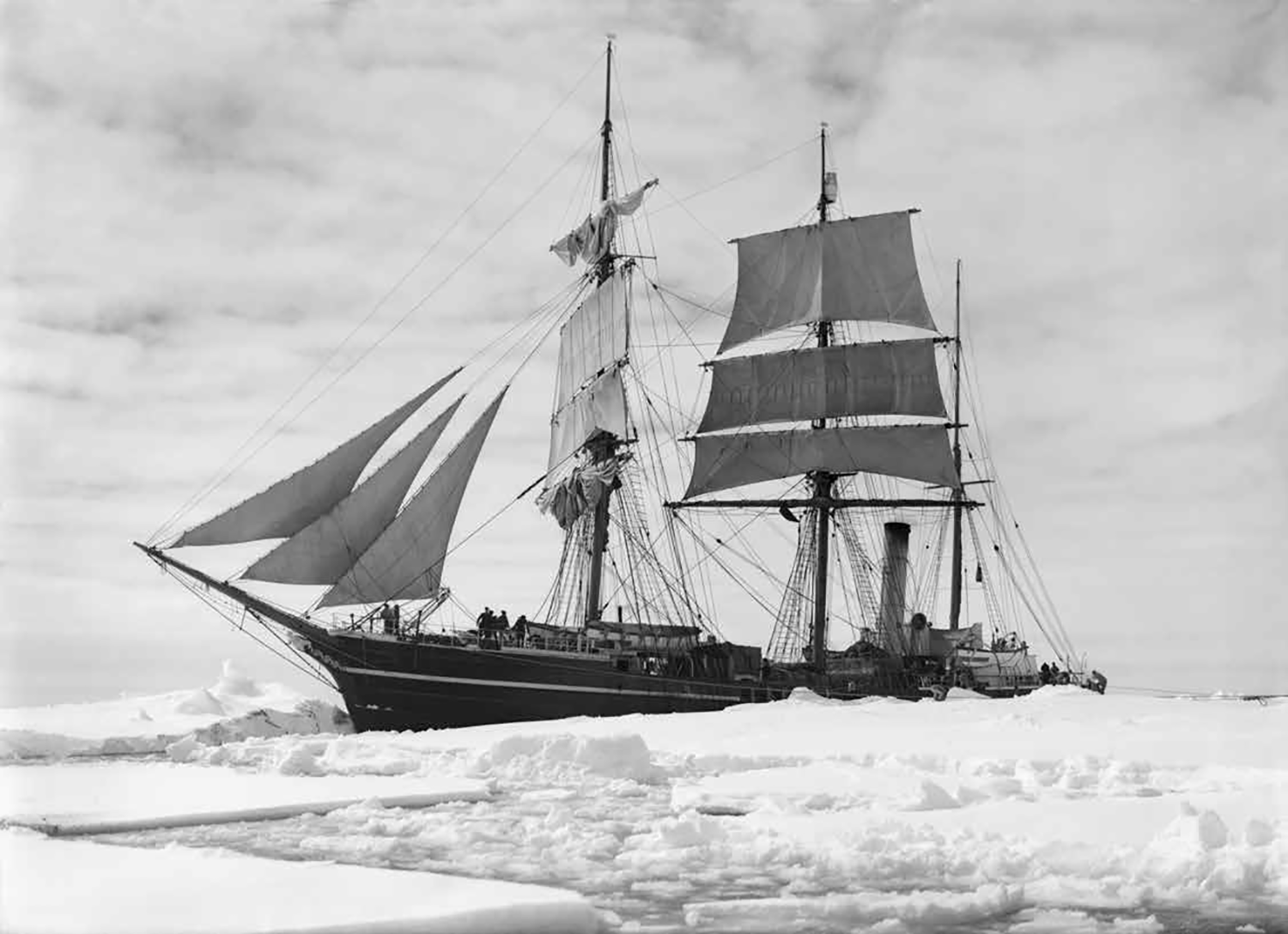
Sépcifications
medium: 55 x 75cm (paper size), 37.5 x 50cm (image size) – limited edition of 30 + 2 AP + 1 PP
large: 75 x 110cm (paper size), 60 x 80cm (image size) – limited edition of 20 + 2 AP + 1 PP
master: 90 x 120cm (paper size), 80 x 100cm (image size) – limited edition of 5 + 2 AP + 1 PP
© Scott Polar Research Institute, University of Cambridge
© Salto-Ulbeek
CAPTAIN SCOTT’S ANTARCTIC EXPEDITION 1910 -1913
The photographs of Herbert Ponting
Limited Edition of Platinum-Palladium prints
The Terra Nova expedition, during which Captain Robert Falcon Scott and his party perished on their return from the South Pole, is among the most important expeditions of Antarctica’s ‘Heroic Age’, when explorers first ventured into the continent’s vast, ice-covered interior. Although Scott and his companions were beaten to the South Pole by the Norwegian explorer Roald Amundsen, the expedition remained a resounding scientific success with many contributions to the fields of Antarctic meteorology, geology, glaciology, cartography, zoology, botany and magnetism, amongst others. Furthermore, accounts of the expedition written by Scott and Apsley Cherry-Garrard went on to become classics of polar literature, whilst the photographs taken by Herbert G. Ponting remain one of the most compelling visual records in the history of human exploration.
Herbert G. Ponting
Herbert G. Ponting (1870-1935) was among the most renowned photographers of his day when he was recruited as ‘camera-artist’ for the Terra Nova expedition. Born into an affluent Victorian family from Salisbury, Ponting worked briefly as a banker before moving to California and turning his attention to photography. During the first years of the twentieth century, magazine assignments took him to the Far East, including Japan, Burma, Java, China and India.
As the Terra Nova expedition’s official photographer, Ponting was allocated enough space to construct a small photographic darkroom within the winter hut at Cape Evans. The condition set by Scott was that Ponting should also sleep in what he referred to as his ‘palatial chamber’. Working mostly with glass plate negatives, Ponting photographed all aspects of the expedition, from portraits to landscapes, and from wildlife to winter life. Imbued with a mixture romanticism and the picturesque, the result were masterful compositions that remain some of the most technically accomplished and aesthetically influential photographs in the history of Antarctica.
Not fit enough to take part on the inland trek to the South Pole, Ponting left Cape Evans onboard the Terra Nova in February 1912 and headed back to London where he worked on a visual narrative of the expedition for Scott to present during lectures on his return. But this was not to be. Scott and his four companions perished on their return from the Pole. Despite the tragedy, Ponting’s photographs were widely disseminated and admired. An agreement signed prior to the expedition, however, meant that he did not have exclusive ownership of his work. Instead, it was his written account of the expedition, The Great White South, that proved his most profitable work.
Following his participation in the Terra Nova expedition, Ponting largely abandoned photography and turned to business, but a number of unsuccessful ventures saw him loose much of the money he invested. By 1930 his health began to deteriorate. He died indebted in London in 1935.
Technical Information
As apparent in the photographs that Herbert Ponting took of the inside of his darkroom at Cape Evans, the photographic equipment that he brought to Antarctica was both comprehensive and voluminous. Consisting of the most up-to-date cameras and processing tools, it prompted Scott to write that ‘The art of photography has never been so well housed within the Polar regions and rarely without them’. Ponting’s array of photographic equipment comprised large stocks of glass plate negatives and photographic chemicals, tripods, numerous lenses, and at least seven photographic cameras and two cinefilm cameras. These ranged from full-plate 6.5 x 8.5 inch Thorton-Pickard cameras, to a 7 x 5 inch Soho Reflex camera, to a couple of smaller A. E. Staley & Co. foldable cameras that he used to train Scott and Henry Birdie Bowers in the art of photography.
Although the Art Society in London produced toned carbon and bromide prints from Ponting’s negatives in the years following his return from Antarctica, Salto Ulbeek’s edition is the first time that his negatives have been used to produce platinum palladium prints. Produced by coating specially manufactured paper with a light-sensitive emulsion containing platinum and palladium salts, platinum-palladium prints exhibit an expanded tonal range, three-dimensionality, and a uniquely luminous quality. They are also the most stable and aesthetically rewarding of all black and white photographic printing techniques, making them the medium of choice for securing photographic archives and legacies far beyond the life of the original negatives. One of the great masters of photography, Alfred Stieglitz, called platinum-palladium printing “the prince of all media”.
The Herbert G. Ponting Archive
The Herbert G. Ponting Archive of over 1,700 large-format glass plate negatives taken during the Terra Nova expedition, 1910-1913, is held at the Scott Polar Research Institute, in the University of Cambridge. Founded in 1920 as the British national memorial to those who died during the expedition, the Scott Polar Research Institute is the oldest international centre for polar research. The Institute remains a centre of excellence in the study of the Antarctic and Arctic, and houses the world’s premier polar library, extensive archives on the history of polar exploration, and a museum with displays of both the historical and contemporary scientific significance of the polar regions.


